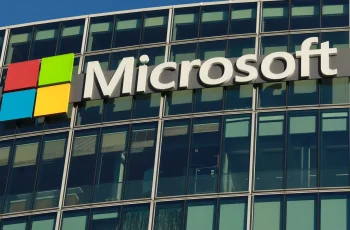Viasat, a notable player in the satellite communications arena, has seen a remarkable spike in its stock value, jumping over 13% following a substantial endorsement from Deutsche Bank analyst Edison Yu. This leap, while exhilarating for investors, raises fundamental questions about the company’s long-term stability in a highly competitive market largely dominated by Elon Musk’s Starlink. Viasat’s ascent may seem like a bright foray into a favorable trading environment; however, the underlying challenges it faces cannot be overlooked.

The Analyst’s Goldmine: Promises of Deleveraging
Yu’s upgrade of Viasat from hold to buy is predicated on the notion that the company possesses multiple avenues for creating value, notably through deleveraging its balance sheet via asset monetization. The analyst believes this process may take between 12 to 18 months, a timeline that feels protracted in the fast-paced tech world.
This bullish outlook certainly has merit and might attract investors eager for gains in a tumultuous environment. However, any prudent investor must remain aware of the precarious situation Viasat finds itself in. The prospect of creating significant equity value hinges on successful execution of core strategies, which have yet to materialize as solidly as investors might hope. The stock’s current high may just be a brief flourish on an uncertain path unless foundational issues are addressed.
Staring Down Starlink
Despite the positive momentum, Viasat faces fierce competition from Starlink, which has demonstrated remarkable agility in expanding its reach internationally. Starlink’s recent agreements with major Indian telecom giants Jio and Bharti Airtel illustrate a strategic depth that Viasat must contend with. Furthermore, Starlink’s rapid deployment of services in countries like Indonesia puts additional pressure on Viasat’s core business.
The risk that Starlink could siphon off Viasat’s customer base is real and ought to temper enthusiasm about the recent stock surge. Yu himself recognized the looming shadow Starlink casts, expressing specific concerns about how Viasat can maintain a competitive edge as the satellite landscape rapidly evolves.
The Bigger Picture: Viasat vs. Market Sentiment
Interestingly, Viasat’s performance thus far in 2025 has significantly outpaced broader market trends, with approximately a 30% rise compared to the S&P 500’s downturn of over 2%. This divergence in performance is worth exploring—what does it reflect about investor sentiment? In an era of cautious optimism, the thrill of a stock appearing to outperform can skew perception, making it all too easy to overlook the choppy waters ahead.
With the stock gaining more than 25% just this month, Viasat presents a stark narrative of hope versus the old adage of “what goes up must come down.” In the complex world of tech investments, and particularly within volatile spaces like satellite communications, investor sentiment can be just as pivotal as the actual fundamentals driving the business.

While Viasat’s stock performance is undoubtedly invigorating, it is essential to approach this triumph with a critical eye. The potential for profit is intertwined with uncertainty that demands careful navigation—making it an intriguing if precarious investment in today’s economic climate.

